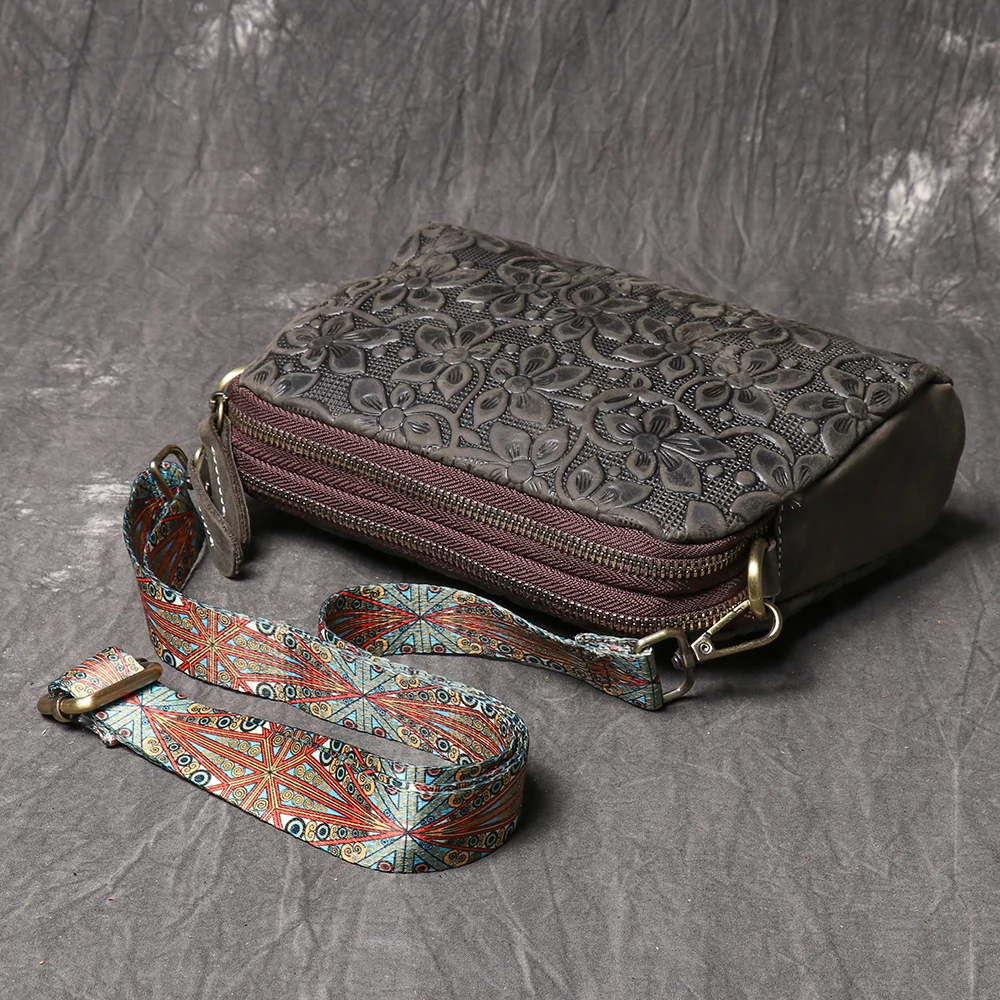1. Introduction: The Evolution of Sustainable Leather Manufacturing
The leather industry has undergone significant transformation in recent decades, with eco-conscious leather treatment methods emerging as essential alternatives to conventional processing. As environmental awareness grows, both manufacturers and consumers are increasingly recognizing the importance of sustainable approaches to leather production.
Traditional leather manufacturing has long been associated with substantial environmental costs – from intensive water usage and chemical pollution to significant energy consumption. The process typically involves numerous harsh chemicals that can contaminate waterways and pose risks to workers and nearby communities. According to industry data, conventional leather processing can use up to 20,000 gallons of water per ton of hide, with much of that water becoming contaminated during the tanning process.
However, the landscape is changing. Consumer demand for sustainable products has pushed manufacturers to develop and implement cleaner, more environmentally responsible methods. This shift represents not just a response to market pressures but a fundamental rethinking of how leather can be produced with minimal ecological impact.
At Summit Carry, we understand that proper leather conditioning and waterproofing is just one aspect of a more comprehensive commitment to sustainability. The journey toward truly eco-conscious leather begins long before a finished product reaches the consumer.
In this comprehensive guide, we’ll explore various sustainable leather treatment methods, their environmental benefits, implementation challenges, and how to identify genuinely eco-conscious leather products. Whether you’re a conscious consumer or industry professional, understanding these alternatives provides valuable insight into the future of sustainable leather manufacturing.
2. Environmental Impact of Traditional Leather Production
2.1 Chrome Tanning: The Industry Standard
Chrome tanning revolutionized leather production when it was introduced in the late 19th century. This method uses chromium sulfate and other chromium salts to tan hides, creating a stable, soft leather that can be processed much faster than traditional methods. Today, chrome tanning accounts for approximately 80-90% of global leather production due to its efficiency, cost-effectiveness, and the versatile properties it gives to leather.
However, the environmental cost of this convenience is substantial:
- Chromium toxicity: While tanneries primarily use trivalent chromium (Chromium III), which is relatively less toxic, improper processing can convert it to hexavalent chromium (Chromium VI) – a known carcinogen that poses serious health risks.
- Water pollution: A single tannery can use 20,000 gallons of water per ton of hide processed, with much of this water becoming contaminated with chromium and other chemicals.
- Waste management challenges: Chrome-tanned leather production generates significant amounts of solid waste and sludge containing chromium and other chemicals, creating disposal problems.
- Worker health concerns: Tannery workers frequently experience higher rates of respiratory problems, skin diseases, and certain cancers due to chemical exposure.
The environmental footprint of conventional leather processing extends beyond the tannery, affecting entire ecosystems. Understanding the environmental impact of leather alternatives helps us make more informed choices about the materials we select for our products and purchases.
2.2 Other Conventional Methods and Their Environmental Footprint
Beyond chrome tanning, several other conventional methods contribute to leather’s environmental challenges:
- Aluminum and zirconium tanning: While less common than chrome, these mineral-based methods still involve heavy metals that can accumulate in the environment.
- Synthetic finishing chemicals: Conventional leather finishing often uses polyurethanes, acrylic polymers, and various synthetic compounds that can release volatile organic compounds (VOCs) and create non-biodegradable waste.
- Chemical dyes and pigments: Many conventional dyes contain heavy metals and chemicals that remain persistent pollutants in wastewater.
- Energy-intensive processing: From soaking and liming to splitting, shaving, and drying, traditional leather manufacturing requires substantial energy inputs, often from fossil fuel sources.
The production process also generates significant solid waste, including hide trimmings, flesh, and hair that, when improperly managed, contribute to landfill issues and potential groundwater contamination.
These environmental concerns have motivated the search for more sustainable approaches to leather production, creating a growing movement toward eco-conscious alternatives that maintain leather’s desirable properties while reducing its ecological footprint.
3. Core Eco-Conscious Leather Treatment Methods
3.1 Vegetable Tanning: Nature’s Traditional Solution
Vegetable tanning represents one of humanity’s oldest crafts, dating back thousands of years before the advent of modern chemistry. This ancient method has experienced a significant revival as consumers and manufacturers seek more natural alternatives to chrome tanning.
The process uses tannins—naturally occurring polyphenolic compounds found in plant materials—to convert raw hides into durable, flexible leather. Common sources include:
- Oak bark and wood
- Chestnut wood extract
- Mimosa bark
- Quebracho wood
- Tara pods
- Sumac leaves
The environmental advantages of vegetable tanning are substantial:
- Biodegradable tanning agents that break down naturally in the environment
- No chromium or heavy metal contamination
- Less toxic waste production
- Natural aesthetic with unique character development
Vegetable-tanned leather develops a distinctive patina over time, growing more beautiful with age and use. This characteristic makes it particularly suitable for products designed to last for many years, like our full-grain leather backpacks that develop character with each adventure.
However, vegetable tanning does present certain challenges:
- Longer processing time (weeks versus hours for chrome tanning)
- Higher water requirements for the traditional process
- Limited color palette compared to chrome-tanned leather
- Initially firmer feel that requires break-in period
The leather produced through vegetable tanning has distinctive characteristics: warmer tones, natural smell, and excellent structural integrity for products that need to hold their shape. It’s particularly well-suited for items like bags, belts, saddles, and sturdy footwear.

3.2 Chrome-Free Mineral Tanning
Chrome-free mineral tanning represents an important innovation in sustainable leather processing, offering many of chrome tanning’s benefits without its environmental drawbacks.
The most common chrome-free approach is “wet-white” tanning, which uses aldehydes, particularly glutaraldehyde, as the primary tanning agent. This method produces a pale-colored intermediate material (hence “wet-white”), contrasting with the blue-green color of chrome-tanned “wet-blue” leather.
Additional chrome-free mineral methods include:
- Zeolite-based tanning: Using naturally occurring minerals that have excellent ion-exchange properties
- Titanium-based tanning: Utilizing non-toxic titanium salts as an alternative metal tanning agent
- Silicate-based systems: Employing modified silicates as eco-friendly tanning materials
These approaches offer several environmental advantages:
- Elimination of chromium from the process and wastewater
- Reduced heavy metal pollution in tannery effluent
- Lower toxicity profile for workers and communities
- Easier waste management with less hazardous materials
Chrome-free leather typically offers excellent softness, flexibility, and heat resistance, making it well-suited for automotive applications, furniture, and fashion items. Many manufacturers use branded systems like SERTAN WT to create standardized, consistent results.
Despite these benefits, challenges remain:
- Some aldehyde tanning processes can release formaldehyde, itself a potential health concern
- Higher production costs compared to conventional chrome tanning
- More complex process control requirements
- Variable performance characteristics depending on specific methods used
Many tanneries are now developing hybrid approaches, combining chrome-free mineral tanning with vegetable tanning to achieve optimal performance while minimizing environmental impact.
3.3 Bio-Based Technologies: The Cutting Edge
At the frontier of sustainable leather processing, bio-based technologies represent some of the most exciting innovations in the industry. These approaches harness biological processes and materials to create leather with minimal environmental impact.
Enzymatic tanning uses specialized proteins to modify collagen fibers without the heavy metals or aldehydes found in conventional methods. These enzymes work by creating cross-links between collagen molecules, stabilizing the protein structure in ways similar to traditional tanning but with significantly reduced environmental impact.
Plant-based innovations are equally promising:
- Hemp extract tanning: Systems like Canapimp utilize hemp derivatives to create stable leather
- Olive leaf extract: Contains natural polyphenols effective for tanning
- Tara pod extract: Provides high tannin content from a renewable resource
- Rhubarb root: Offers natural tanning compounds with unique properties
These methods align with green chemistry principles by:
– Using renewable resources
– Reducing toxic substances
– Minimizing energy requirements
– Creating biodegradable byproducts
The proper conditioning of leather backpacks made with these alternative tanning methods requires understanding their unique properties. Bio-tanned leathers often have different moisture content and absorption characteristics compared to conventionally tanned materials.
Bio-based technologies often integrate with closed-loop systems, where water and materials are recycled within the production process. This circular approach minimizes waste discharge and resource consumption, representing a significant advancement over linear production models.
While still evolving and scaling, these cutting-edge methods are already being commercialized by forward-thinking tanneries and brands committed to environmental leadership. Research continues to improve performance, consistency, and cost-effectiveness to make these innovations more accessible across the industry.
4. Beyond Tanning: A Holistic Approach to Sustainable Leather Production
4.1 Water Management and Conservation
Water stewardship represents one of the most critical aspects of sustainable leather production. Progressive tanneries have implemented closed-loop water systems that dramatically reduce freshwater consumption while minimizing pollution:
- Water recovery systems can recycle 30-50% of process water back into production
- Advanced filtration technologies, including reverse osmosis and nanofiltration, remove contaminants while preserving valuable water resources
- Biological treatment systems use microorganisms to break down organic pollutants in wastewater
Modern facilities often implement multi-stage treatment processes that begin with physical separation of solids, followed by biological treatment to break down organic matter, and finally advanced chemical or membrane treatments to remove specific contaminants.
These integrated water management approaches not only reduce environmental impact but often generate significant cost savings through reduced water purchase, heating, and treatment expenses.
4.2 Waste Recovery and Circular Practices
Innovative tanneries are transforming what was once considered waste into valuable resources through creative recovery and circular economy approaches:
- Collagen protein from trimmings can be extracted for food, cosmetic, and medical applications
- Leather scraps are increasingly being converted into reconstituted leather products
- Tannery sludge, when properly treated, can be used as agricultural fertilizer or in building materials
- Fat recovered from processing can be refined for use in soaps and other products
Leading manufacturers of ethically sourced leather backpack materials integrate these circular practices into their supply chains, ensuring that materials maintain their highest value throughout their lifecycle.
Progressive facilities have achieved remarkable waste reduction, with some approaching zero-waste operations by finding applications for virtually all byproducts. These practices not only benefit the environment but also create new revenue streams and cost savings.
4.3 Energy Efficiency and Renewable Integration
Energy consumption represents another significant environmental aspect of leather production. Sustainable approaches include:
- Process optimization to reduce thermal energy requirements
- Heat recovery systems that capture and reuse thermal energy
- High-efficiency motors and equipment that reduce electricity consumption
- Strategic batch planning to minimize equipment idle time
Many forward-thinking tanneries are transitioning to renewable energy sources, with solar installations becoming increasingly common in regions with favorable conditions. Some facilities have achieved 15-30% energy savings through comprehensive efficiency programs, while others have installed biomass boilers that use agricultural waste to generate process heat.
Combined heat and power systems that generate both electricity and useful heat from the same energy source are particularly well-suited for tanneries, which have simultaneous demands for both forms of energy.
5. Leather Alternatives: When Traditional Leather Isn’t the Answer
5.1 Plant-Based Leather Alternatives
The search for sustainable materials has led to remarkable innovations in plant-based leather alternatives that offer similar aesthetics and functionality without animal inputs:
- Piñatex: Made from pineapple leaf fibers, this material repurposes agricultural waste from the pineapple industry into a leather-like material with excellent durability.
- Mushroom leather (Mylo): Created from mycelium, the root structure of mushrooms, this material can be grown in just weeks with minimal environmental impact.
- Cactus leather: Developed in Mexico, this innovative material uses nopal cactus leaves, requires minimal water, and avoids pesticides or herbicides.
- Apple leather: Utilizing apple pomace and peels from the juice industry, this material prevents food waste while creating a versatile alternative.
These materials offer significant environmental advantages:
– Reduced water consumption (up to 95% less than animal leather)
– No animal farming impacts
– Lower carbon footprint
– Utilization of agricultural waste in many cases
– Biodegradability at end of life (for most plant-based alternatives)

While impressive, these alternatives do have certain limitations in performance, including different water resistance properties, stretch characteristics, and aging patterns compared to traditional leather.
5.2 Lab-Grown and Recycled Leathers
Technology is enabling entirely new approaches to leather production that minimize environmental impact while maintaining desired material properties:
Cell-cultivated leather: Biotechnology companies are developing real leather grown from animal cells without raising and slaughtering animals. This emerging technology creates genuine collagen-based material with substantially reduced environmental impact.
Recycled leather: Innovative processes now enable leather scraps and waste to be broken down and reconstituted into new material. These approaches use binding agents to create sheets of leather fiber that can be used for various applications.
Understanding does oiling leather waterproof your items applies differently to these alternative materials, as their composition and structure may respond differently to traditional leather care products.
Lab-grown leather remains primarily in the research and development stage, with limited commercial availability but enormous potential for future sustainable production. Meanwhile, recycled leather products are increasingly available, offering a way to reduce waste and extend the useful life of existing materials.
These technological approaches offer a compromise for those seeking the performance characteristics of leather with reduced environmental impact. As these technologies mature, they promise to provide increasingly viable alternatives to conventional leather production.
6. Identifying Genuinely Eco-Conscious Leather Products
6.1 Certifications and Standards
Navigating the world of sustainable leather can be challenging without reliable indicators of environmental performance. Several respected certification programs provide valuable guidance:
Leather Working Group (LWG)
The most widely recognized leather sustainability certification assesses environmental practices across the entire tanning process. Their audit protocol evaluates:
– Water and energy consumption
– Chemical management
– Air and noise emissions
– Waste management
– Traceability
Tanneries receive ratings of Gold, Silver, Bronze, or Audited based on their environmental performance, with each level representing progressively higher standards of sustainability.
Other Important Certifications:
– Blue Angel: Germany’s eco-label for environmentally friendly products
– Nordic Swan: Scandinavian certification focusing on lifecycle environmental impact
– ZDHC (Zero Discharge of Hazardous Chemicals): Initiative focused on eliminating dangerous substances from production
When seeking truly understanding eco-certified leather, these standards provide reliable third-party verification of environmental claims. Look for certification logos on product descriptions or company websites, and don’t hesitate to request certification details from brands making sustainability claims.
6.2 Evaluating Brand Claims and Product Characteristics
Beyond formal certifications, consumers can learn to identify genuinely sustainable leather through careful evaluation:
Signs of Greenwashing to Watch For:
– Vague terms like “eco-friendly” or “green” without specific explanations
– Environmental claims without verification or certification
– Focus on a single environmental attribute while ignoring others
– Misleading imagery suggesting nature or sustainability
Physical Characteristics of Eco-Conscious Leather:
– Vegetable-tanned leather often has a natural smell versus the chemical scent of chrome-tanned leather
– Eco-friendly leathers typically develop patina differently, often with warmer, more varied tones
– Look for complete transparency in material sourcing and processing
– Quality construction that ensures longevity (stitching, edges, hardware)
Remember that truly sustainable leather goes beyond just the tanning method—it encompasses the entire lifecycle from sourcing through production to eventual disposal or recycling. Brands committed to sustainability will provide comprehensive information about their environmental practices rather than selective highlights.
7. The Benefits of Choosing Eco-Conscious Leather
Selecting eco-conscious leather products delivers multiple benefits that extend far beyond simple environmental protection:
Environmental Advantages:
– Reduced water pollution from harmful chemicals
– Lower carbon footprint compared to conventional processing
– Decreased water consumption through efficient practices
– Minimized waste generation and improved waste management
– Conservation of valuable resources through circular approaches
Health Benefits:
– Reduced exposure to potentially harmful chemicals for workers
– Safer working conditions in tanneries
– Minimized chemical residues in finished products
– Lower risk of skin irritation for sensitive individuals
Proper leather maintenance for commuters helps extend product life, which is perhaps the most sustainable approach of all. Well-maintained eco-conscious leather products can last decades, spreading their environmental impact across many years of use.
Aesthetic and Performance Benefits:
– Unique character development and patination
– Individual variations that create one-of-a-kind products
– Often improved breathability and comfort
– Connection to traditional craftsmanship
Market and Brand Benefits:
– Meeting growing consumer demand for sustainable products
– Alignment with personal values and ethics
– Supporting innovation in cleaner manufacturing
– Encouraging industry-wide improvement through consumer choice

Choosing eco-conscious leather represents an investment in both quality and sustainability—products that not only look beautiful but also reflect responsible production values.
8. Is Eco-Conscious Leather Worth It? Addressing Common Questions
Q: Why does eco-conscious leather often cost more than conventional leather?
A: Sustainable leather processing typically involves longer production times, higher-quality natural materials, and more labor-intensive methods. Additionally, smaller production volumes mean fewer economies of scale. However, these higher upfront costs often translate to better durability and longevity, potentially making them more economical over the product’s lifetime.
Q: How does the performance of eco-conscious leather compare to conventional leather?
A: Performance varies by specific method. Vegetable-tanned leather generally offers excellent structural integrity and aging characteristics but may be less water-resistant initially. Chrome-free mineral tanned leather can closely match conventional leather’s properties, while bio-based leathers continue to improve in performance as technology advances.
Q: Are eco-conscious leather products widely available?
A: Availability has improved significantly in recent years. Many specialty brands now focus exclusively on sustainable leather goods, while numerous mainstream manufacturers have introduced eco-conscious lines or begun transitioning their entire production. Online shopping has made these products more accessible to consumers everywhere.
Q: Do eco-friendly leathers require special care?
A: Some eco-conscious leathers, particularly vegetable-tanned varieties, may benefit from specific care routines. They often respond well to natural conditioning products and may develop patina differently than chrome-tanned leather. However, basic maintenance principles of keeping clean, conditioning occasionally, and protecting from extreme conditions apply to all quality leathers.
Q: Is any leather production truly sustainable?
A: Perfect sustainability remains a challenging goal for all manufacturing. However, the eco-conscious methods discussed represent significant improvements over conventional processing. The most sustainable approach combines responsible production methods with long product lifespans and eventual biodegradability or recyclability.
9. What Does the Future Hold for Leather Sustainability?
The leather industry continues to evolve toward greater sustainability, with several promising developments on the horizon:
Advanced Bio-Based Technologies
Research into enzymatic processes and plant-based compounds is accelerating, with new tanning agents being discovered and refined. These innovations promise to further reduce environmental impact while maintaining or improving leather performance characteristics.
Industry Collaboration and Standardization
Cross-industry initiatives are developing standardized approaches to measuring and improving sustainability throughout the leather supply chain. These collaborative efforts are establishing best practices that can be implemented globally, raising the environmental performance of the entire sector.
Circular Economy Integration
The future of leather lies in closed-loop systems where materials are continuously recycled and reused. Emerging technologies for breaking down and reconstituting leather promise to minimize waste while maximizing resource efficiency. These approaches align with broader economic shifts toward circular models that eliminate the concept of waste.
Consumer Education and Transparency
As consumers become more knowledgeable about sustainability issues, brands are responding with unprecedented transparency about their supply chains and manufacturing processes. Digital technologies like blockchain are enabling verification of sustainability claims and complete traceability from farm to finished product.
At Summit Carry, our commitment to sustainability drives our material selection for luxury leather backpacks and other products. By embracing eco-conscious leather treatment methods, we’re part of a larger movement toward responsible manufacturing that respects both timeless craftsmanship and environmental stewardship.
The journey toward truly sustainable leather production is ongoing, with continuous innovation driving improvements throughout the industry. By understanding and supporting eco-conscious leather treatment methods, consumers can play a vital role in encouraging this positive transformation.

